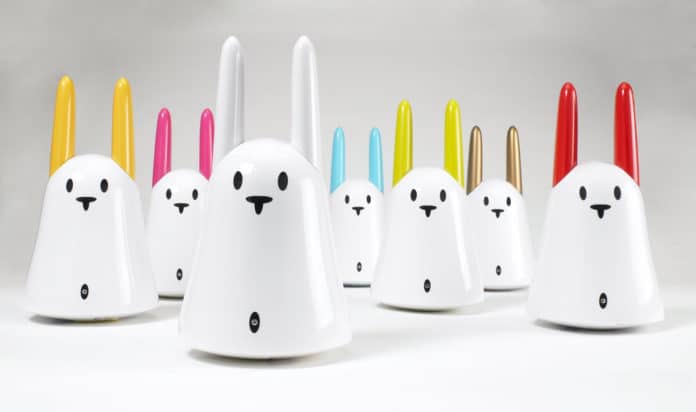Created in 2005 by the French company Violet, the Nabaztag was one of the first connected objects to play a sort of personal assistant role. The life of this cute little rabbit was unfortunately not so long that officially moved their ears for the last time in 2015. This Internet-connected robotic rabbit was resurrected last year by the company with the help of a crowdfunding campaign Ulule. And now, Violet is again raising funds for the new 2020 production batch of the TagTagTag board.
It consists of a brand new architecture based on a new electronic card (including five RGB LEDs, two microphones, an audio codec + amplifier, an accelerometer, and a temperature and humidity sensor) and a Raspberry Pi running a new environment software. It gives the robotic rabbit access to new services, such as weather, local speech recognition, and ear-based Tai Chi.
The idea is to allow the Nabaztag to function again without having to be connected to the cloud. The rabbit becomes independent, and this emancipation is guaranteed by the open-source nature of the project.
The Nabaztag is a Wi-Fi enabled ambient electronic device in the shape of a rabbit that can connect to the Internet (to download weather forecasts, read its owner’s e-mail, etc.). It is also customizable and programmable to an extent. The Nabaztag rabbit is 23 cm (9.1 in) in height and weighs 418 grams. The robot can send and receive messages that are read out loud as well as perform the following services (by either speaking the information out loud or using indicative lights): weather forecast, stock market report, news headlines, alarm clock, e-mail alerts, RSS-Feeds, MP3-Streams, and others.
Also, there is an API, with bindings for multiple programming languages, including Java, Perl, Python, or PHP, available to program the Nabaztag.
Everything is available in the form of a kit called TagTagTag in presale on the crowdfunding platform Ulule. Compared to what they promised on the first campaign, the company has added two features: the support for RFID and Nabblockly, created by Paul for a programming course for elementary school kids. It’s fantastic.
Interested candidates need to spend some $84 for a TagTagTag board without a Raspberry Pi and at least $372 for a full TagTagTag-Raspberry Pi kit and a robotic-bunny.
